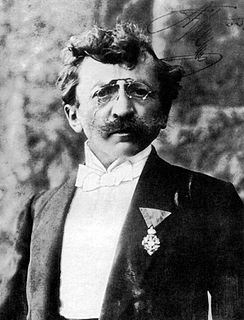 W
WAnton Ažbe was a Slovene realist painter and teacher of painting. Ažbe, crippled since birth and orphaned at the age of 8, learned painting as an apprentice to Janez Wolf and at the Academies in Vienna and Munich. At the age of 30 Ažbe founded his own school of painting in Munich that became a popular attraction for Eastern European students. Ažbe trained the "big four" Slovenian impressionists and a whole generation of Russian painters. Ažbe's training methods were adopted and reused by Russian artists both at home and in emigration.
 W
WJanez Bernik was a multiple-time awarded and internationally acclaimed Slovenian painter and academic.
 W
WGvido Birolla was a Slovene painter, illustrator and caricaturist, known for his political caricatures published in satirical newspapers of the time and his book illustrations.
 W
WIvan Čargo was a Slovene painter, illustrator, scenographer, and caricaturist.
 W
WFranz Caucig, Franco Caucig or Francesco Caucig, also known in Slovene as Franc Kavčič or Frančišek Caucig was a Neoclassical painter and drawer of Slovene origin. He is one of the best representatives of the Central European Neoclassicism. He attained the highest positions and recognitions of all the artists of Slovene descent.
 W
WAnton Cebej was a Slovenian baroque painter.
 W
WJože Ciuha was a Slovenian painter.
 W
WJosip Egartner was a Slovene painter of Austrian origin.
 W
WMaksim Gaspari was a Slovene painter best known for his paintings and illustrations as well as numerous postcards with folklore motifs and scenes from rural life.
 W
WVlado Goreski – Rafik is a Macedonian and Slovenian graphic artist, artist, scenographer. He finished secondary school in Bitola, and he graduated at the Faculty of Philosophy – Skopje, Department History of Art at 1981. He has studied at the International Centre of Graphic Arts in Ljubljana, Slovenia,,,,.
 W
WAnton Gvajc was a Slovene painter. The majority of his work is genre and landscape painting. He also worked as a teacher in Gorica, Trieste and Maribor.
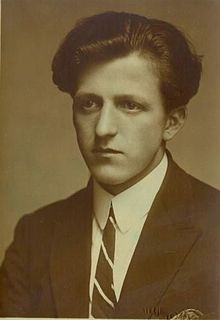 W
WBožidar Jakac was a Slovene Expressionist, Realist and Symbolist painter, printmaker, art teacher, photographer and filmmaker. He produced one of the most extensive oeuvres of pastels and oil paintings, drawings and, above all, prints in Slovenia. He was also one of the key organizers in the establishment of the Ljubljana Academy of Fine Arts and the International Biennal of Graphic Art in Ljubljana. Some of his work is on display in museums in Belgrade.
 W
WAnton Karinger (1829-1870) was a Slovene painter and poet.
 W
WBoris Kobe was a Slovene architect, painter, and designer.
 W
WTone Kralj was a Slovene sculptor and painter also known for his wall paintings and illustrations.
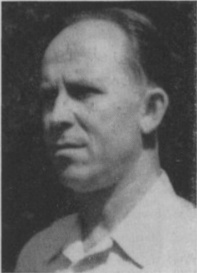 W
WFrance Mihelič was a Slovene painter, one of the key figures in Slovene painting in the second half of the 20th century, known for his surrealist figurative paintings and prints.
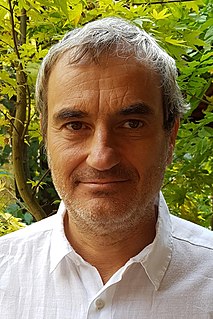 W
WMarko Modic is a Slovenian photographer, painter and visual artist from Ljubljana, Slovenia. Photographic and artistic circles of the world attributed Marko Modic a special place because of his unique and colorful works of art.
 W
WZoran Mušič, baptised as Anton Zoran Musič, was a Slovene painter, printmaker, and draughtsman from the Karst Plateau near the Adriatic Sea. He was the only painter of Slovene descent who managed to establish himself in the elite cultural circles of Italy and France, particularly Paris, where he lived for most of his later life. He painted landscapes, still lifes, portraits, and self-portraits, as well as scenes of horror from the Dachau concentration camp and vedute of Venice.
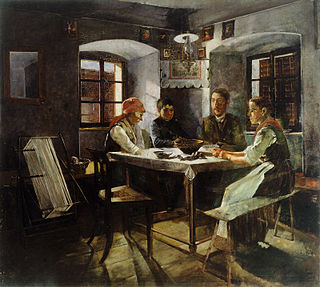 W
WJožef Petkovšek was an important Slovenian painter who brought existenstialist and dark modernist themes to the Slovenian art scene. Despite a short and turbulent life, his work influenced the preeminent Slovenian novelist Ivan Cankar, was promoted by Rihard Jakopič, the famous impressionist painter and founder of the nation’s National Gallery, and led Slovenian art into the 20th century.
 W
WVeno Pilon was a Slovene expressionist painter, graphic artist and photographer.
 W
WFrance Podrekar, sometimes referred to as Fran Podrekar, was a Slovene painter known for his caricatures and illustrations.
 W
WMarij Pregelj was a Slovene painter, considered one of the key figures in Slovene painting in the second half of the 20th century.
 W
WSavo Sovre was a Slovene painter also known for his illustrations of children's books.
 W
WMihael Stroj was a Austro-Hungarian painter.
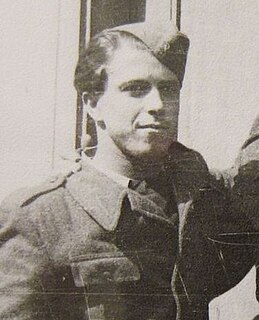 W
WIve Šubic was a Slovene painter, graphic artists and illustrator.
 W
WGiuseppe Tominz, also known as Jožef Tominc, was an Italian-Slovene painter from the Austrian Littoral. He worked mostly in the cultural milieu of the upper bourgeoisie in the Austrian Illyrian Kingdom. He was one of the most prominent portraitists of the Biedermeier period. He became renowned for his realistic portraits. He worked mostly in the Austrian Littoral, but also produced religious paintings in Carniola and in Croatia. His handiwork can be seen in the Holy Mary Church in Stoliv. Nowadays, many of his works are on display in the Revoltella Museum in Trieste, some in the National Gallery of Slovenia in Ljubljana, National Museum of Serbia and in the Museum of History and Art of Gorizia. He is considered part of both the Italian and the Slovenian national culture canon.